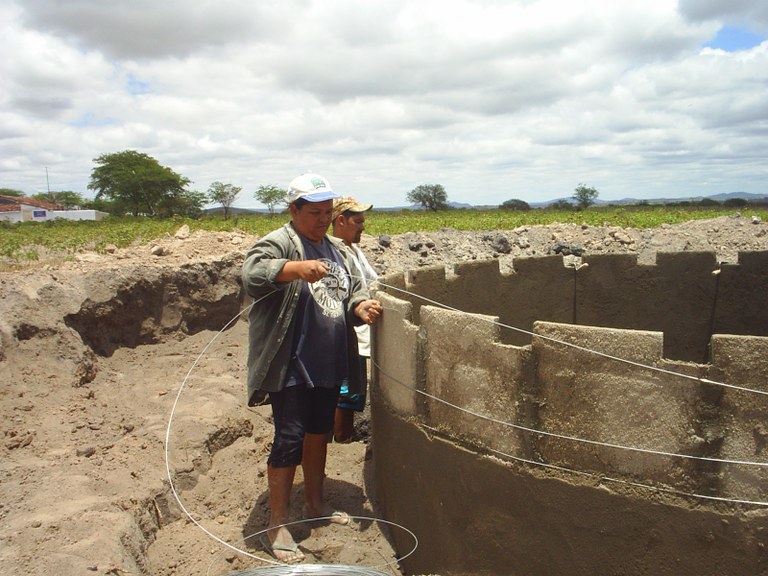Brazil: Rainwater harvesting in semi-arid region helps women
The north-east of Brazil is a semi-arid region, characterised by severe lack of water and droughts that contribute to underdevelopment of the region. The “One Million Rainwater Harvesting Programme” (P1MC) was launched by civil society groups in the region, targeting rural families without a secure drinking water source close to their home. By December 2007, 228,541 families had been mobilised; 221,514 RWH systems constructed and 5,848 masons trained under the programme.
The objective of P1MC is to construct one million rainwater harvesting systems for decentralised access to drinking water to one million families, or about five million people in total. The programme is carried out by Articulação do Semi-Árido (ASA), a forum of about 750 NGOs; from agricultural labour unions and farmers’ associations, to cooperatives, churches, and organisations for local and regional development. The Brazilian government and ASA jointly finance the programme.
In P1MC people are mobilised to participate in policy implementation and are trained to construct rainwater harvesting tanks and to use water efficiently. Applications are analysed in community meetings, and beneficiaries are selected by applying the following criteria for ranking: 1) female headed households; 2) families with children up to the age of 6 years; 3) families with children and adolescents of school age; 4) families with adults aged 65 years or older; 5) families which include disabled people.
|
|
|---|
| Edilene constructing a tank in Sitio Minador |
Female-headed households prioritised
The rainwater harvesting system collects rainfall from the roof of the house into a 16,000 litre semi-underground tank, which provides sufficient water for drinking and cooking for eight months, the average dry period in the region. Water quality is guaranteed by a little fish that eats larvae, a cheap technique which is well known to the old people of the region. Households contribute by digging the hole for the tank and by providing food and lodging to masons during construction, which takes five days on average. In every household, one family member takes responsibility for the management and maintenance of the RWH system, for which he or she receives training. In the majority of households, women take care of the tank.
The selection criteria benefit female-headed households, as it was recognised that these households are more vulnerable. Experience also shows that the project is more sustainable when women are in charge. After construction of the RWH system, the value of the family property increases because of the access to water. Women, who occupy a central role in the domestic water management, are less likely than men to sell the land after the RWH system has been constructed.
Family income increases
The RWH system reduces women’s daily work in fetching water, even though sometimes there is not enough rain to fill the tank. However, during these periods the tanks can be filled with water from water trucks. Alta Quitéria da Silva from Sítio Colônia, Pernanbuco, is a widow and works as health agent. Until 2002, she had to buy 24 litres of water a week for her family. “After construction of the tanks the agony ended,” she says. In addition to the benefit of not having to buy water, community health conditions, especially that of children, have improved.
Through construction of RWH systems, family income increases. The accessibility of water assists women to gain a small income from cultivating vegetables or fruit, or from breeding animals. New professions also emerge. Edilene Barbosa from Sítio Minador, Pernambuco, attended a women masons’ training course four years ago, even though her husband objected. “After fifteen days I started to work, and he saw that the 'thing was good'. I was earning more money than he did, so he decided to get trained too, and now he works with me. Up to date I have already built more than 80 tanks in different villages.” Edilene goes to work by bike and earns around $100 (EUR 65) for each tank she constructs. She is now planning to buy a motorcycle so she can cover greater distances.



